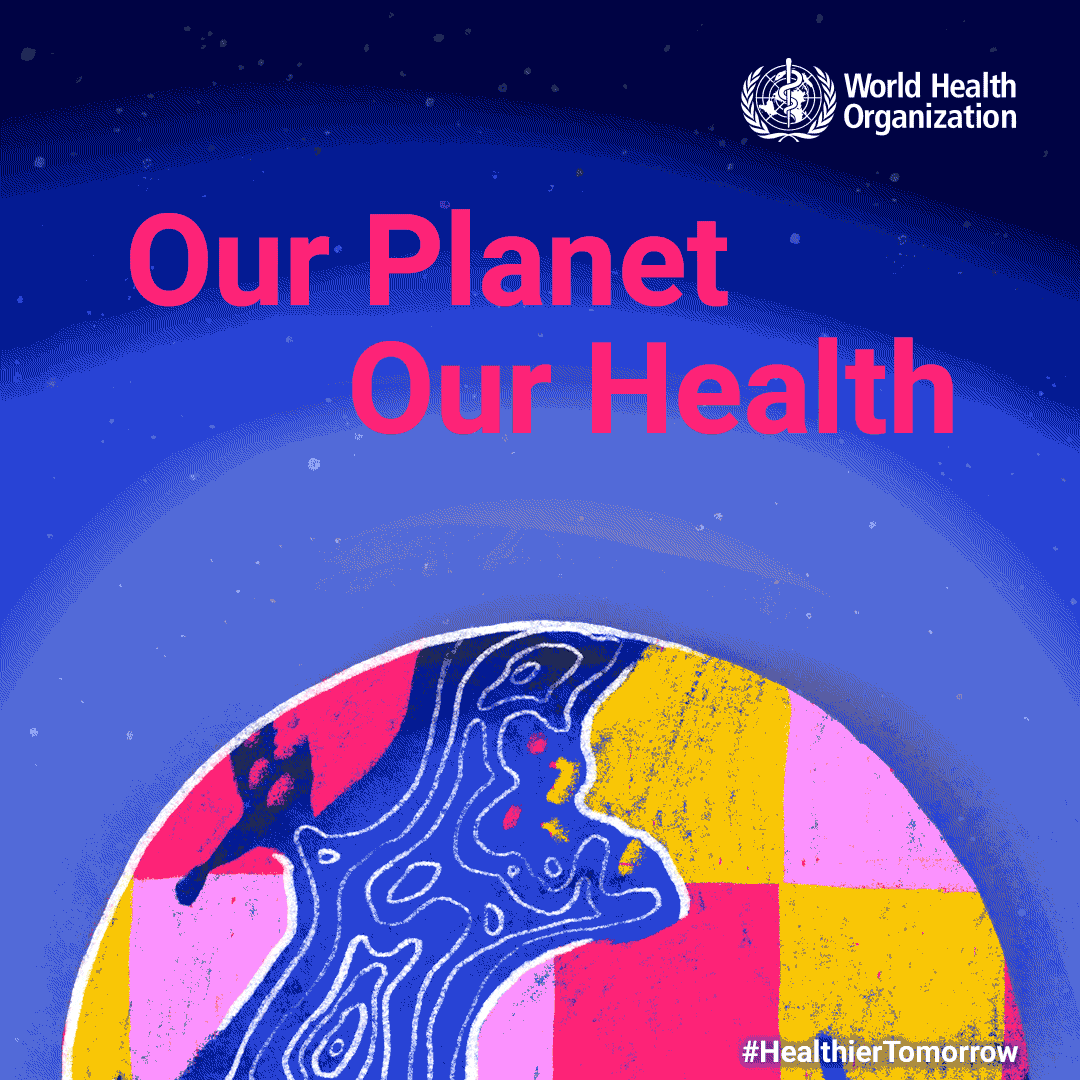Our planet, our health
6 April 2022

In the midst of a pandemic, a polluted planet and rising temperatures are increasing diseases like cancer, asthma and heart disease. This World Health Day, WHO is focusing global attention on urgent actions needed to keep humans and the planet healthy and foster a movement to create societies focused on well-being. In this blog, THET's Climate Change Working Group sets out our latest plans to reduce our environmental impact, while supporting our community to adapt and respond to the climate crisis.
Reducing environmental impact in the way we deliver our work
As we look to launch our new Strategic Plan this year, our approach to mitigating climate change will take centre stage. This follows discussions with our team and community on how we can effectively reduce our detrimental environmental impact, while supporting health systems to adapt and respond to the climate crisis.
Reducing our impact on the climate is perhaps conceptually the more straightforward of the two. We must reduce THET’s carbon footprint as far as possible without impeding our core purpose of developing the capacity of health systems.
How we go about this is trickier, and we have gone back and forth with questions, pros and cons, thinking we’ve found an answer only for another challenge to arise. A seemingly simple first step is to ensure we can accurately audit our carbon footprint and hold ourselves accountable by reporting to our Board of Trustees. We will aim to track the level of carbon dioxide equivalent (CO2e) emissions per project. However, while capturing CO2e emissions from international flights is easy, how do we account for an employee travelling to the same place for two separate projects? The answer is simple, we’ll divide by two. But should we weight it, depending on how much time they spend on each project? And for those working from home, do we ask them to keep track of their energy use and waste disposal? Or take the national average as a guide?
The discussion then moves on to behaviour change. Would setting limits, for example, dissuade staff from meeting with colleagues or travelling to faraway places, and would this lead to new global inequities? A return trip from the UK to Myanmar requires two flights and pumps out 6443kg CO2e into the atmosphere. A direct flight to Addis Ababa and back produces 3,886kg CO2e – almost half as much. How do we maintain our level of support to the countries where we work while being responsible to the environment? Our answer so far is to set benchmarks for each country per scale of project; when we develop the carbon budget for a project, it must fit within that country’s carbon benchmark.
The broader point is, where does THET’s scope end? To what extent should we impose our principles onto others, particularly our grant holders? Is it better to provide information, encouragement and funds, but leave it to Health Partnerships to have flexibility in these decisions? We know that newer partnerships, or individuals new to a partnership, require much more in-person interaction in order to develop trust and understanding. We also have some nascent knowledge on which health themes/cadres benefit more than others from in-person training. And will reduced international travel decrease engagement among the UK workforce? Or does remote volunteering actually afford greater opportunities to those who otherwise wouldn’t have the time to travel?
Reducing environmental impact and increasing adaptation and resilience through project delivery
What projects can THET deliver or fund that will either reduce a health system’s impact on the environment, or support a health system to adapt to the changes brought about by the climate crisis?
With regard to the former, according to the 2021 Lancet Countdown on health and climate change, the health sector is responsible for 5% of global greenhouse gas emissions. Any improvements THET makes to health systems therefore must not exacerbate the climate crisis. At the 2021 THET Conference, Dr Elizabeth Tissingh from King’s Global Health Partnerships spoke of how the operating theatres she works in in the Democratic Republic of Congo produce fewer CO2e emissions than those in the UK, due in part to the natural light and ventilation available So, any project that aims to reduce the environmental impact of a health system should assume that the UK does not have all the answers. Nevertheless, THET is exploring ways in which the UK has made strides in this area and whether lessons learnt can be shared appropriately overseas. See, for example, the Sustainable Healthcare Coalition’s Care Pathway Carbon Calculator, plus the work of Greener NHS and Green Health Wales.
For the latter, THET is looking to contribute to the WHO National Health Adaptation Plans and using the WHO Health and Climate Change Toolkit, while strengthening integrated disease reporting and surveillance systems. Needless to say, as we aim to accelerate this type of work, we will as ever always consult Health Partnerships and Ministries of Health to ensure the activities are responsible and appropriate.
Looking ahead
For now, we are humble in our understanding and realistic in our ambition. We are very much aware that this is new ground for THET. Looking back at our 2016-2021 strategy, there is just one mention of climate change and no detail on what THET would specifically do about it. So, conceptually, we have taken a big step forward in the last 5 years, and we highly welcome the opportunity to discuss these ideas and more, not least at our next conference on 22nd April, COVID Partnerships: Transformative Pathways for a Healthy Recovery.
We know that Health Partnerships care deeply about this issue and we will do our best to facilitate this desire. If you would like to be involved in future discussions as we shape the Health Partnership response to the climate crisis, please contact the Working Group Chair at: Richard.skone-james@thet.org.
The World Health Organization estimates that more than
13 million deaths
around the world each year are due to avoidable environmental causes.


0 Comments
Leave a comment
Your email address will not be published.